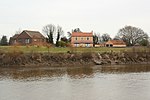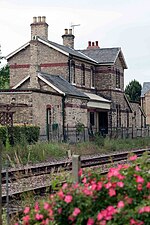West Stockwith
Bassetlaw DistrictCivil parishes in NottinghamshireEngvarB from May 2016Villages in Nottinghamshire

West Stockwith is a village within the Bassetlaw district of Nottinghamshire, England. The population at the 2011 census was 327, this increased to 335 at the 2021 census. It lies on the west bank of the River Trent, 3 miles (4.8 km) north-west of Gainsborough and 1.5 miles (2.4 km) east of Misterton. West Stockwith is an ecclesiastical parish in the Church of England Diocese of Southwell and Nottingham with the parish church of St Mary the Virgin's Church, West Stockwith being built in 1722. East Stockwith is a settlement on the other side of the Trent, but within the county boundaries of Lincolnshire. The two villages were once linked together by a passenger ferry.
Excerpt from the Wikipedia article West Stockwith (License: CC BY-SA 3.0, Authors, Images).West Stockwith
Main Street, Bassetlaw
Geographical coordinates (GPS) Address Nearby Places Show on map
Geographical coordinates (GPS)
| Latitude | Longitude |
|---|---|
| N 53.444 ° | E -0.811 ° |
Address
Main Street
Main Street
DN10 4HA Bassetlaw
England, United Kingdom
Open on Google Maps









